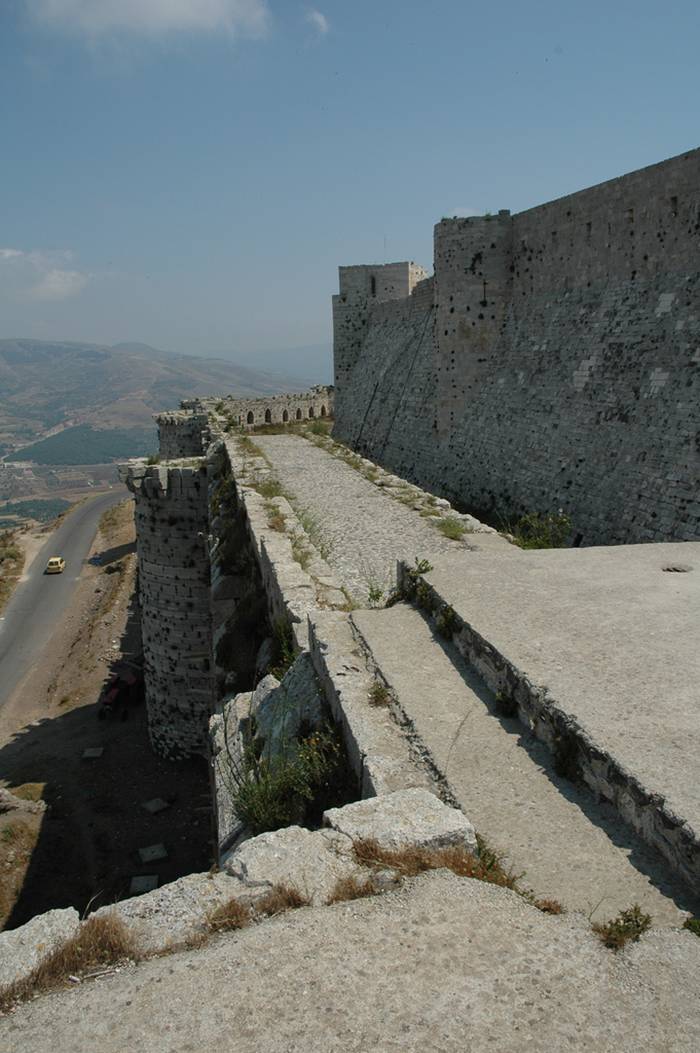Krak des Chevaliers, also Crac des Chevaliers, is a Crusader castle in Syria and one of the most important preserved medieval castles in the world. The site was first inhabited in the 11th century by a settlement of Kurds; as a result it was known as Hisn al Akrad, meaning the "Castle of the Kurds". In 1142 it was given by Raymond II, Count of Tripoli, to the Knights Hospitaller. It remained in their possession until it fell in 1271. It became known as Crac de l'Ospital; the name Krak des Chevaliers was coined in the 19th century.
Photo — Link
The Hospitallers began rebuilding the castle in the 1140s and were finished by 1170 when an earthquake damaged the castle. The order controlled a number of castles along the border of the County of Tripoli, a state founded after the First Crusade. Krak des Chevaliers was amongst the most important and acted as a centre of administration as well as a military base. After a second phase of building was undertaken in the 13th century, Krak des Chevaliers became a concentric castle. This phase created the outer wall and gave the castle its current appearance. The first half of the century has been described as Krak des Chevaliers' "golden age". At its peak, Krak des Chevaliers housed a garrison of around 2,000. Such a large garrison allowed the Hospitallers to extract tribute from a wide area. From the 1250s the fortunes of the Knights Hospitaller took a turn for the worse and in 1271 Krak des Chevaliers was captured by the Mamluk Sultan Baibars after a siege lasting 36 days, and then purportedly only by way of a forged letter purportedly from the Hospitallers' Grand Master that caused the Knights to surrender. 29 more images after the break...
Photo — Link
Photo — Link
Photo — Link
Photo — Link
Photo — Link
Photo — Link
Photo — Link
Photo — Link
Photo — Link
Photo — Link
Photo — Link
Photo — Link
Photo — Link
Photo — Link
Photo — Link
Photo — Link
Photo — Link
Photo — Link
Photo — Link
Photo — Link
Photo — Link
Photo — Link
Photo — Link
Photo — Link
Photo — Link
Photo — Link
Photo — Link
Photo — Link
Photo — Link
Via — Link






























No comments:
Post a Comment